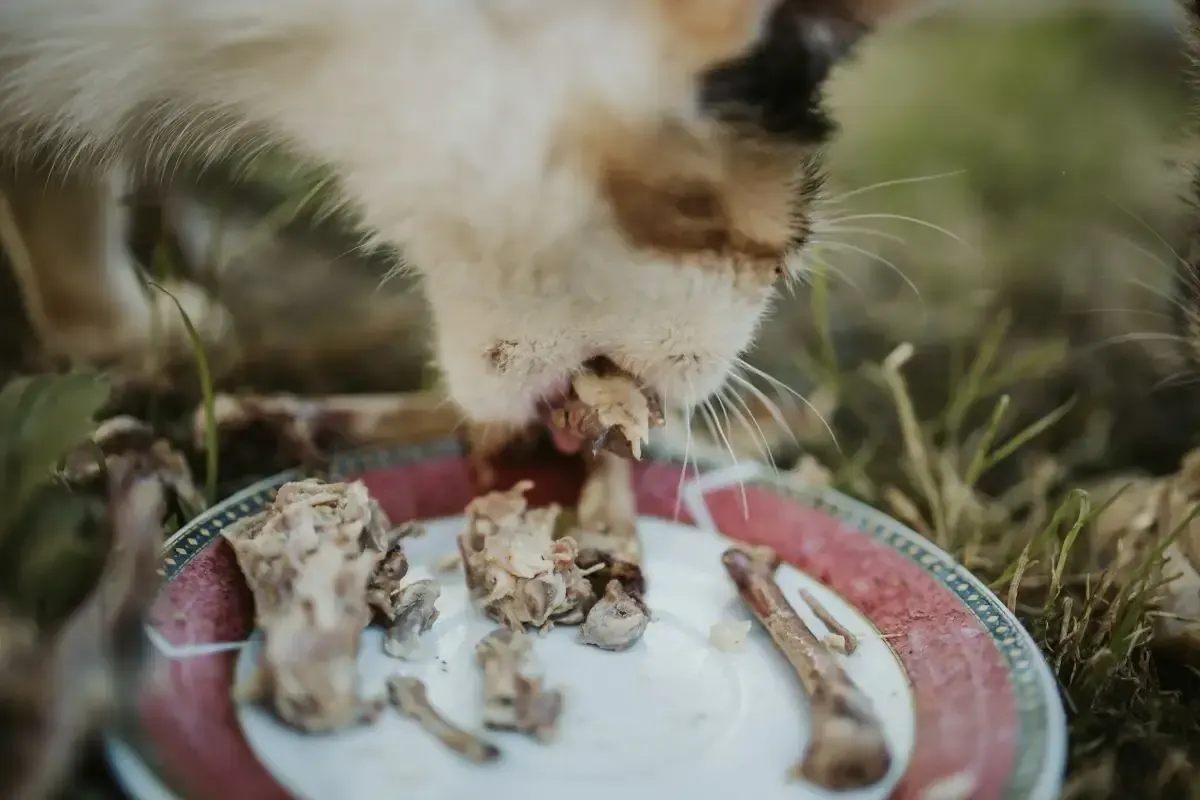Bringing home a curious kitten or caring for your adult feline friend often leads pet owners to wonder: can Cats Eat Raw Meat? As obligate carnivores, cats thrive on meat-based diets reminiscent of their wild ancestors. While raw meat offers nutritional perks, it’s not without precautions. This guide explores the benefits, potential risks, suitable types of raw meat, and safe feeding practices to help you make informed decisions for your cat’s health.
Many cat owners explore raw feeding as part of a BARF diet for cats, which mimics natural prey. However, raw meat alone isn’t a complete meal—pair it with organs, bones, and supplements for balance.
Benefits of Feeding Raw Meat to Cats
Raw meat is highly appealing to cats due to its natural texture, aroma, and taste, often boosting appetite in picky eaters. Nutritionally, it provides bioavailable proteins, fats, and enzymes that support optimal digestion and nutrient absorption.
Key advantages include:
- Improved digestion: Cats’ short digestive tracts handle raw food efficiently, reducing bloating and stool issues.
- Shinier coat and healthier skin: Essential fatty acids like Omega-3 and Omega-6 promote glossy fur and reduce allergies.
- Stronger bones and teeth: Natural taurine, phosphorus, and calcium from raw sources aid dental health and skeletal strength.
- Weight management: Lean raw meats help maintain ideal body weight, preventing obesity common in processed kibble-fed cats.
Veterinarians note that raw diets can enhance overall vitality, with studies showing better hydration from higher moisture content (source: Journal of Animal Physiology). For growing kittens, options like a Maine Coon kitten diet incorporating raw elements support rapid development.
Risks of Raw Meat and How to Minimize Them
While beneficial, raw meat carries risks if not handled properly. Awareness and preparation are key to safe feeding.
Parasites and Pathogens
Supermarket or butcher meat isn’t tested like commercial pet food for Salmonella or E. coli. Freeze raw meat for at least 3 days at -4°F (-20°C) to kill parasites like Toxoplasma and bacteria. Thaw in the fridge, not at room temperature.
Bone Hazards
Raw bones supply calcium but must be appropriately sized—chicken wings or quail bones work well for cats. Avoid large or cooked bones, which splinter and cause choking, fractures, or blockages. Ground bone in balanced recipes is safest.
 Cat eating raw bones safely
Cat eating raw bones safely
Nutritional Imbalances
Plain raw meat lacks complete nutrition—taurine deficiency can lead to heart disease (dilated cardiomyopathy). Always include offal (liver, heart) for vitamins and a vet-approved supplement. Rotate proteins for variety.
Consult a veterinarian before transitioning, especially for cats with health conditions.
Safe Types of Raw Meat for Cats
Cats can safely eat various raw meats when prepared correctly. Focus on human-grade, fresh sources and trim excess fat.
Raw Chicken
Yes, raw chicken is excellent—lean, digestible, and rich in protein, Omega-6, taurine, B6, and phosphorus. It supports muscle growth, skin health, and strong bones.
Raw Beef
Absolutely, beef boosts heart health, vision, and reproduction with zinc, iron, selenium, vitamins A, B-complex, and taurine. Choose lean cuts to avoid fat overload.
For specialized needs, consider supplementing with products like Nutra Thrive for cats on Amazon.
Raw Pork
In moderation, due to higher fat and salt. It provides iron for blood cells, zinc for skin, and B vitamins for immunity and metabolism.
Raw Lamb
Lamb delivers B vitamins (B2, B3, B6, B12), zinc, and protein for nerves, immunity, and energy.
Raw Turkey
Lean turkey offers taurine for eyes, digestion, and immunity—ideal for bland diets during tummy troubles.
Raw Duck
Duck’s Omega-3s benefit skin and coat; selenium, zinc, and B vitamins enhance immunity and energy.
Raw Mince and Steak
Opt for lean mince (beef or turkey) without seasonings. Steak provides iron, zinc, B12 for energy and nerves—but limit portions.
Raw Meats Cats Should Avoid
Steer clear of:
- Fatty, salty, or seasoned meats (e.g., raw bacon, sausage—toxic garlic/onion).
- Processed items with additives.
Raw fish in excess risks thiaminase, depleting B1 vitamins.
How to Prepare Raw Meat for Your Cat
- Purchase fresh, human-grade meat.
- Freeze for 3+ days.
- Thaw in fridge (24 hours per portion).
- Portion based on weight (2-4% body weight daily).
- Serve fresh; refrigerate leftovers up to 4 days.
Hygiene is crucial: Use separate boards, wash hands, and sanitize surfaces.
Why a Raw Diet Excels for Cats
Raw feeding aligns with feline biology, providing 95%+ meat, bone, and organs for complete nutrition. It aids digestion, reduces allergies, and curbs picky eating through protein variety. Transition gradually over 7-10 days.
For strays or rescues, start with simple raw like stray cat food options.
Conclusion
Cats can eat raw meat safely and beneficially when sourced properly, balanced, and prepared with care. From chicken to duck, these proteins fuel their carnivorous needs while minimizing risks like bacteria or deficiencies. Always prioritize quality and veterinary advice for your cat’s unique needs—monitor health and adjust as required. Explore more raw feeding tips and the best food for Maine Coon kittens to optimize your pet’s diet today!
References
- Companion Animal Nutrition (2018). doi:10.12968/coan.2018.0068
- Feline Diabetes resources on taurine.
- National Beef Association health facts.
- Today’s Veterinary Practice on pancreatitis.
- MDPI Journal on raw pet food digestion (2017).
